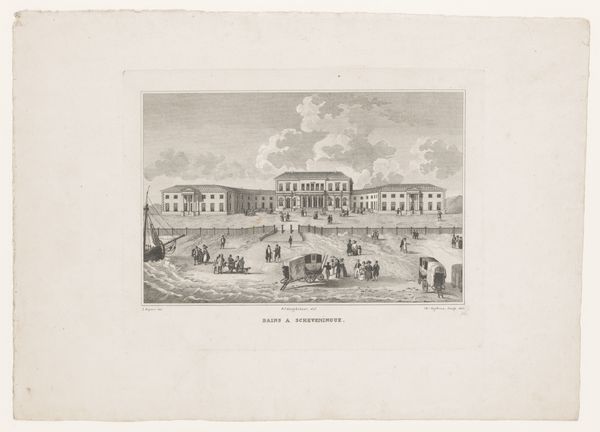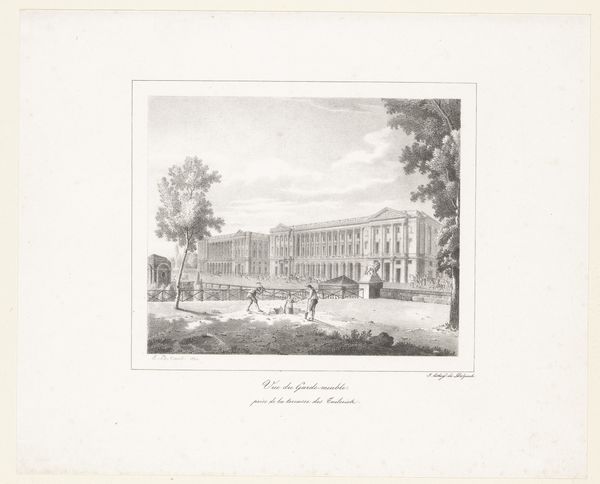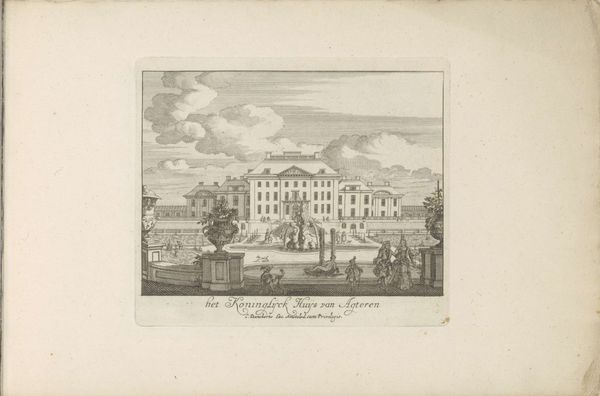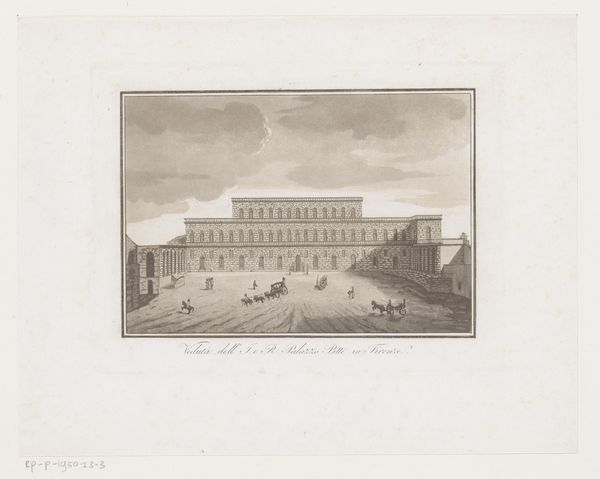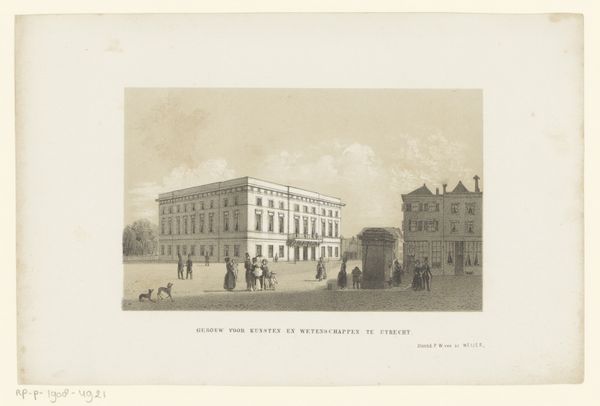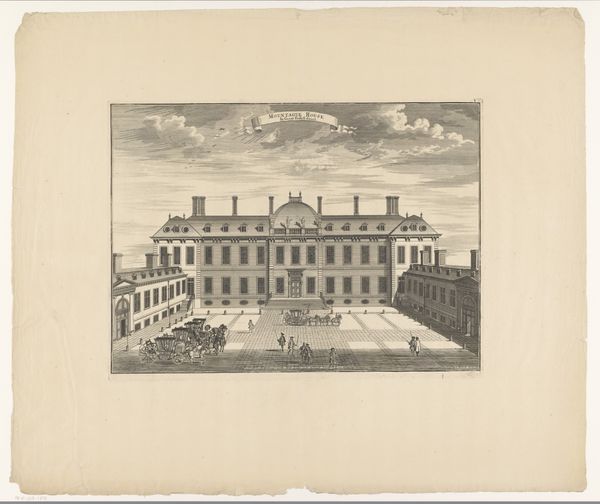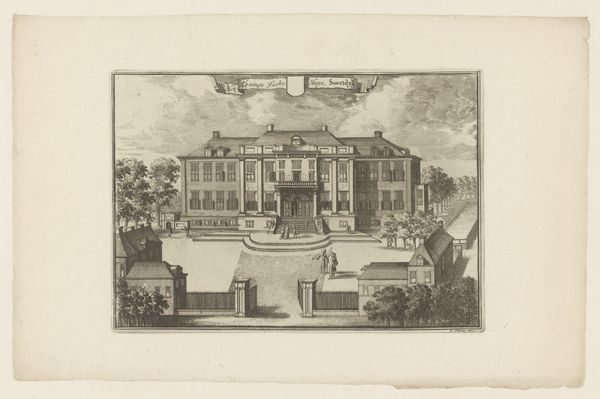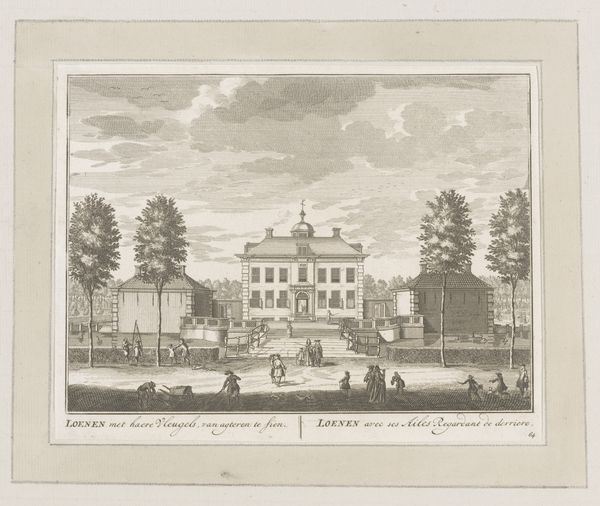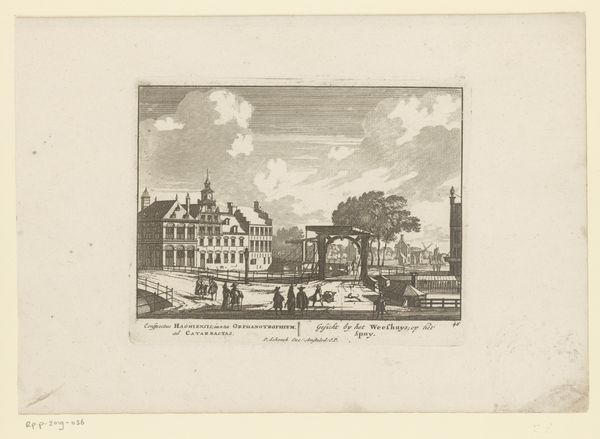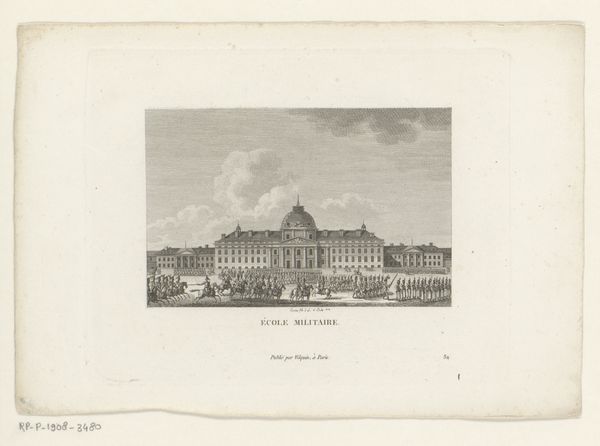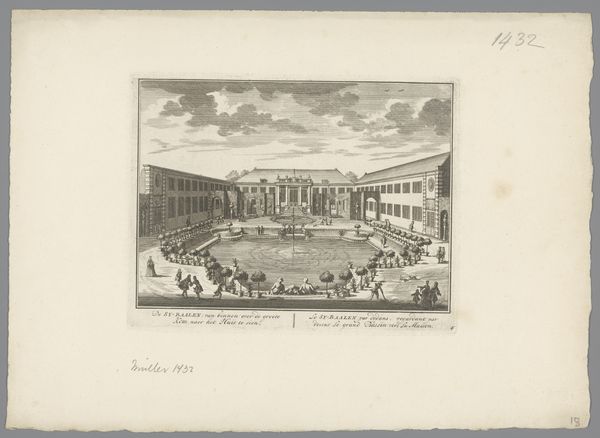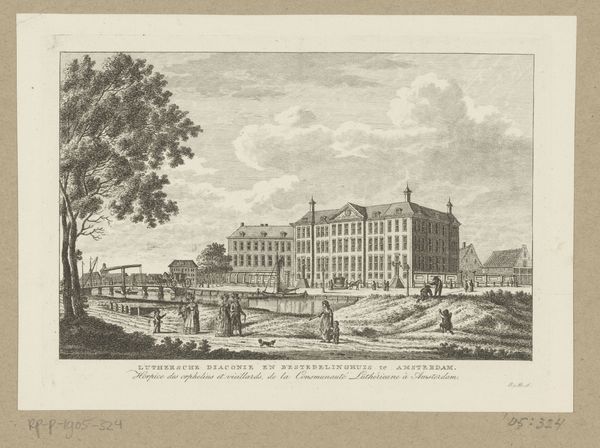
print, engraving
#
baroque
# print
#
landscape
#
cityscape
#
engraving
Dimensions: height 130 mm, width 165 mm
Copyright: Rijks Museum: Open Domain
Curator: This engraving from around 1700 offers us a glimpse of 'Gezicht op Paleis het Loo, vanuit de tuin te zien' – View of Paleis het Loo seen from the garden. It's a work attributed to Jan van Call. Editor: There's a sort of ordered serenity to the piece; a calm authority. Even the sky seems neatly combed with clouds arranged just so. Is that formality a projection, do you think? Curator: I think that projection speaks volumes about the intent and purpose of such imagery. The Palace is not simply being shown, but is being presented in a manner befitting its role in Dutch society at the time. The architecture itself becomes a symbol of power, prosperity, and order. Editor: Right, and that symbolism continues down to the carefully planned garden in the foreground. Those urns, the balanced paths… it’s a human effort to assert control, a literal shaping of nature itself to reflect authority. Is that legible for contemporary audiences? Curator: It speaks to long-standing, enduring power dynamics in representation. Even the choice of engraving as a medium makes a statement. It was a way to widely disseminate an image and ideology – essentially mass media for the elite. Editor: It is fascinating how seemingly ‘neutral’ or documentary images were – and still are – laden with implicit social cues. The figures strolling the garden appear almost like props, further emphasizing the scale and grandeur. Curator: Precisely! And let’s not forget the visual vocabulary of palaces. Symmetry suggests balance, which communicates justice and stability. High vantage points, grand staircases, classical ornamentation...these became standardized, understood elements in promoting institutional concepts of legitimacy and governance. Editor: Thinking of today, perhaps reality TV is the new court portraiture. Same dynamics of power, surveillance, and aspiration, simply with different tools. Curator: Exactly. Studying this unassuming engraving helps us decode the visual grammar through which power and authority is still conveyed today. The symbols may change, but the underlying psychological mechanisms remain. Editor: Yes, and I'll remember this whenever I feel impressed by symmetry.
Comments
No comments
Be the first to comment and join the conversation on the ultimate creative platform.
